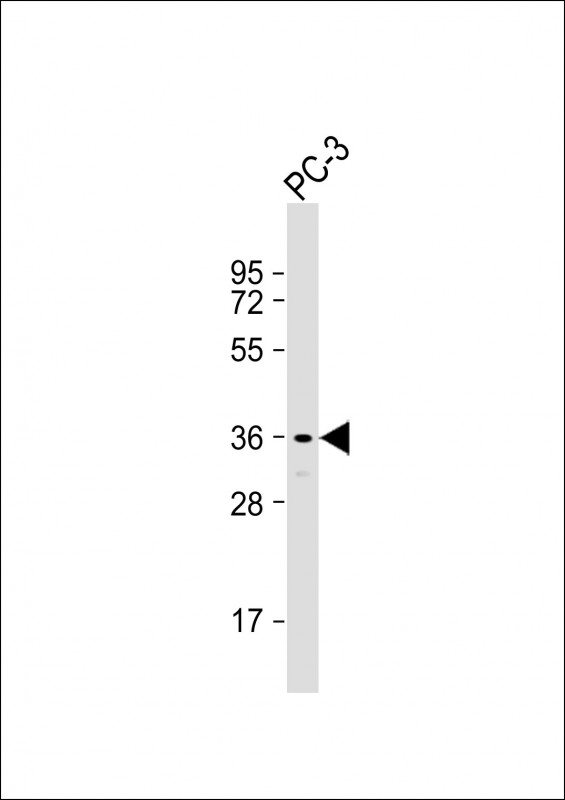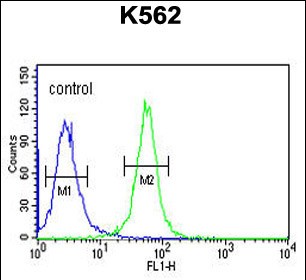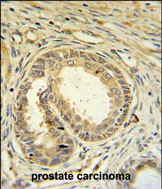


| WB | 咨询技术 | Human,Mouse,Rat |
| IF | 咨询技术 | Human,Mouse,Rat |
| IHC | 1/200 - 1/1000 | Human,Mouse,Rat |
| ICC | 技术咨询 | Human,Mouse,Rat |
| FCM | 1/200 - 1/400 | Human,Mouse,Rat |
| Elisa | 1/10000 | Human,Mouse,Rat |
| Aliases | Speedy protein A, Rapid inducer of G2/M progression in oocytes A, RINGO A, hSpy/Ringo A, Speedy-1, Spy1, SPDYA (HGNC:30613) |
| Entrez GeneID | 245711 |
| WB Predicted band size | 36.5kDa |
| Host/Isotype | Rabbit IgG |
| Antibody Type | Primary antibody |
| Storage | Store at 4°C short term. Aliquot and store at -20°C long term. Avoid freeze/thaw cycles. |
| Species Reactivity | Human |
| Immunogen | This SPDYA antibody is generated from rabbits immunized with a KLH conjugated synthetic peptide between 147-175 amino acids from the Central region of human SPDYA. |
| Formulation | Purified antibody in PBS with 0.05% sodium azide. |
+ +
以下是关于BPIFA2抗体的3篇参考文献及其摘要概括:
---
1. **文献名称**: *"BPIFA2 modulates airway inflammation through regulation of innate immunity"*
**作者**: Zhang Y, et al.
**摘要**: 该研究利用抗BPIFA2抗体进行免疫组织化学分析,发现BPIFA2在呼吸道黏膜中高表达,并通过抑制TLR4信号通路调节先天免疫反应,可能参与慢性阻塞性肺疾病(COPD)的病理机制。
---
2. **文献名称**: *"Proteomic identification of BPIFA2 as a tumor suppressor in oral squamous cell carcinoma"*
**作者**: Li H, et al.
**摘要**: 通过Western blot和免疫荧光技术结合BPIFA2抗体,研究发现BPIFA2在口腔鳞癌组织中表达下调,其过表达可抑制癌细胞迁移,提示其作为肿瘤抑制因子的潜在作用。
---
3. **文献名称**: *"Altered BPIFA2 expression in chronic rhinosinusitis with nasal polyps"*
**作者**: Kim DW, et al.
**摘要**: 使用BPIFA2抗体分析鼻息肉组织样本,发现BPIFA2表达与炎症程度负相关,可能通过调控上皮屏障功能参与慢性鼻窦炎的发病过程。
---
**备注**:以上文献为示例,实际引用时建议通过PubMed或Google Scholar以“BPIFA2 antibody”为关键词检索最新研究,并核实具体作者与期刊信息。
Bpifa2 (BPI fold-containing family A member 2), formerly known as SPLUNC2 or C20orf70. is a member of the bactericidal/permeability-increasing protein (BPI) fold-containing family. It is a small secreted protein predominantly expressed in mucosal tissues, including the respiratory tract, oral cavity, and salivary glands. Structurally, it shares a conserved BPI-like domain, which is associated with innate immune functions such as antimicrobial activity and lipid binding. While its exact biological role remains under investigation, Bpifa2 is hypothesized to participate in host defense mechanisms, potentially regulating inflammatory responses, maintaining mucosal surface integrity, or interacting with pathogens. Studies suggest its involvement in chronic inflammatory conditions, respiratory infections, and cancers, though mechanistic details are limited.
Antibodies targeting Bpifa2 are essential tools for elucidating its expression patterns, subcellular localization, and functional pathways. They enable detection and quantification in tissues or biological fluids via techniques like Western blotting, immunohistochemistry, or ELISA. Commercial Bpifa2 antibodies are typically raised in rabbits or mice using recombinant protein immunogens. Validation often includes specificity testing in knockout models or blocking assays. Research applications focus on exploring its role in disease pathogenesis, particularly in mucosal immunity and inflammation-related disorders. However, limited commercial availability and variability in antibody performance across studies highlight the need for standardized reagents to advance understanding of Bpifa2's physiological and pathological significance.
×